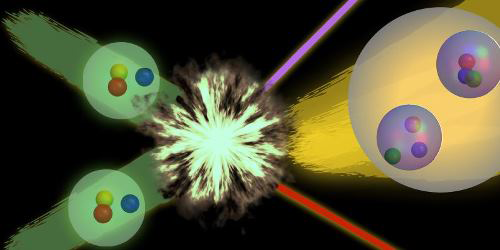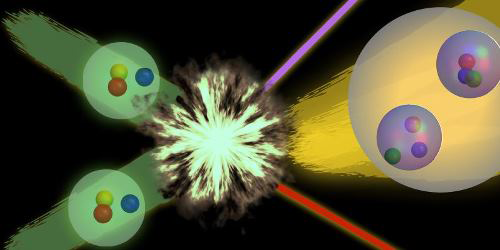Strong Force Calculations for Weak Force Reactions
Nuclear forces come in two varieties: strong and weak. The strong force involves quark-quark interactions, while the weak force is mainly responsible for radioactive decays. While the two forces behave differently, for the first time, new theoretical work uses calculations based on the strong force to determine parameters of two weak-force processes: proton-proton fusion and tritium beta decay. The values calculated by the NPLQCD Collaboration are consistent with experimental observations. With further refinements, this work could lead to a better understanding of astrophysical nuclear processes and neutrino physics.
The strong force is described by quantum chromodynamics (QCD), which is notoriously difficult to solve because the strong attraction between quarks does not decrease with distance. Physicists have dealt with QCD’s intractability by performing calculations on a four-dimensional lattice. Lattice QCD provides approximate solutions that become more and more accurate as the lattice spacing is shrunk to zero.
Using a lattice QCD framework, the researchers in the NPLQCD Collaboration treat the weak force as a “background field” and compute interactions between different nucleons and light nuclei, such as protons, neutrons, deuterons, etc. From these calculations, they extract the probability of proton-proton fusion—the main reaction powering stars like our Sun. They also determine a parameter related to the rate of tritium beta decay. Even though the team used unrealistically large quark masses to make the calculations simpler, the results were in line with previous estimates. By using more natural mass inputs, the approach should provide, for example, a more precise value for the tritium decay rate, which would put stricter limits on the neutrino mass.
This research is published in Physical Review Letters.
–Michael Schirber
Michael Schirber is a Corresponding Editor for Physics based in Lyon, France.
Correction (22 Aug 2017): An earlier version of the article incorrectly called lattice QCD a “model.”





